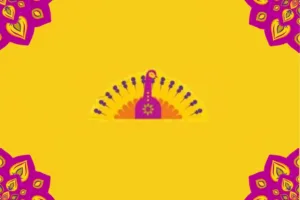For some, New Year means champagne and countdowns, but for others, it’s about dancing, purifying rituals, or even the perfect pair of red underwear.
Fez – As the clock strikes midnight on December 31, the world erupts in celebration, but the ways people welcome the new year vary greatly depending on where you are.
From unique traditions in Spain to the multifaceted customs in India and Japan, here’s how three countries and their distinct cultures make New Year’s Eve an unforgettable experience.
Spain: grapes, red underwear, and fireworks
The twelve grapes of luck: In Spain, eating twelve grapes at the stroke of midnight is believed to bring good fortune for the year ahead. Each grape represents a month and a wish, and the trick is to finish them all before the last bell tolls so that your wishes come true by the end of the year.
Lucky red underwear: For Spaniards, wearing red underwear on New Year’s Eve isn’t just a quirky fashion choice; it’s a tradition said to attract love and prosperity. Gifted underwear is considered even luckier!
Fireworks and street parties: Cities like Madrid and Barcelona come alive with dazzling fireworks displays. Plaza del Sol in Madrid becomes a central hub for gatherings, where people cheer and toast with cava (sparkling wine).
India: diverse rituals across regions
Lighting lamps in Kerala: In the southern state of Kerala, New Year, often aligned with the Vishu festival, is welcomed by lighting traditional oil lamps and preparing a ‘Vishu Kani,’ a collection of auspicious items symbolizing prosperity.
Dancing with masks in West Bengal: Tribes in West Bengal celebrate with ‘Chhau’ dance performances, a mix of martial arts, storytelling, and colorful masks. These dances are meant to ward off evil spirits as the new year begins.
Bonfires in Punjab: Known as Lohri, this New Year’s festival involves lighting bonfires, dancing, and singing folk songs to mark the end of winter and the start of a new harvest season.
Japan: cleansing bells, Mochi, and postcards
108 Bell Rings: In Buddhist temples across Japan, bells are rung 108 times to symbolize purification from earthly desires and sins, ensuring a fresh start for the new year.
Eating Mochi: Mochi (rice cakes) are a staple during the New Year. Families often gather to make and enjoy these treats, symbolizing strength and good fortune.
Nengajo Postcards: Exchanging Nengajo, or New Year’s postcards, is a cherished tradition. These cards often feature wishes for health and success and are delivered right on January 1.
From eating grapes in Spain to dancing around bonfires in India and ringing temple bells in Japan, these traditions highlight the creativity and cultural richness of New Year celebrations around the world.
No matter how it’s done, the goal remains universal: to start the year with hope, joy, and community.
















